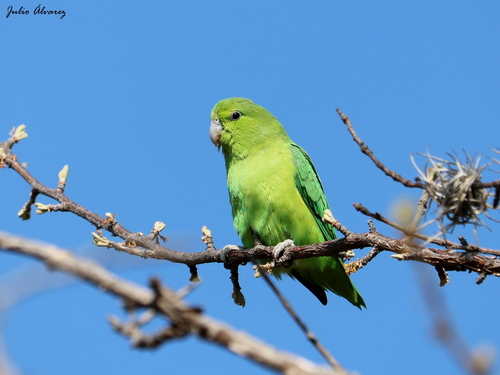
Mexican Parrotlet
The Mexican Parrotlet, with its striking blue rump and sociable nature, flits through Mexico's tropical forests. Known for their playful antics, these small parrots are often spotted in lively groups, contributing to local ecosystems by dispersing seeds and controlling insect populations.
30 years
Lifespan
28.3495 g
Weight
Length: 11 - 13 cm
Size
Grey, Yellow, Blue, White, Green
Color
40 mph
Top Speed
Near Threatened
Conservation Status
Decreasing
Population Trend
Characteristics
The Mexican Parrotlet (Forpus cyanopygius) is a small, vibrant parrot native to western Mexico. They thrive in tropical and subtropical regions, including forests and plantations. Males are distinguished by their bright blue rump and wings, while females are primarily green. They are social birds, often seen in pairs or small flocks.
Distribution Range of the Mexican Parrotlet
Forpus cyanopygius, commonly known as the Mexican Parrotlet, is native to western Mexico. Its range extends from southern Sonora and southwestern Chihuahua south through Nayarit, Jalisco, Colima, Michoacán, and into Guerrero.
Mexican Parrotlet's Habitat
Environmental Conditions
The Mexican Parrotlet inhabits tropical and subtropical dry forests, thorn forests, and arid scrublands. It is often found in lowland areas and foothills up to altitudes of about 1,500 meters (4,900 feet). These regions typically experience a warm climate with distinct wet and dry seasons.
Ecological Niche
Forpus cyanopygius primarily feeds on seeds, fruits, and buds, playing a role in seed dispersal within its habitat. The species is adapted to living in relatively open areas and can often be seen in small flocks. They are cavity nesters, often utilizing tree hollows or other natural cavities for breeding.
Copyright @ Nature Style Limited. All Rights Reserved.
 English
English